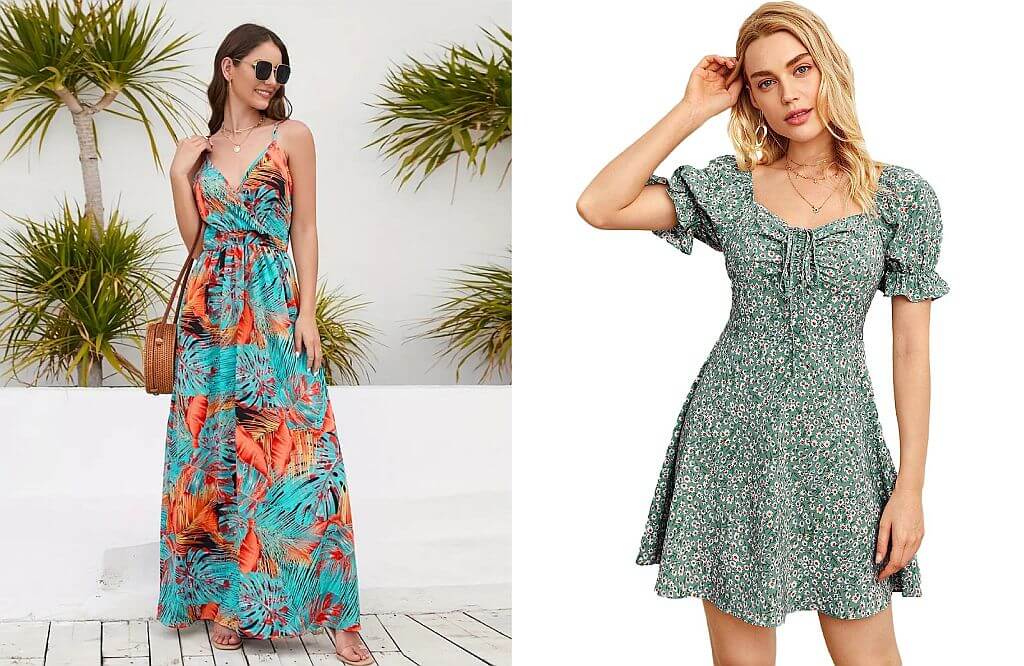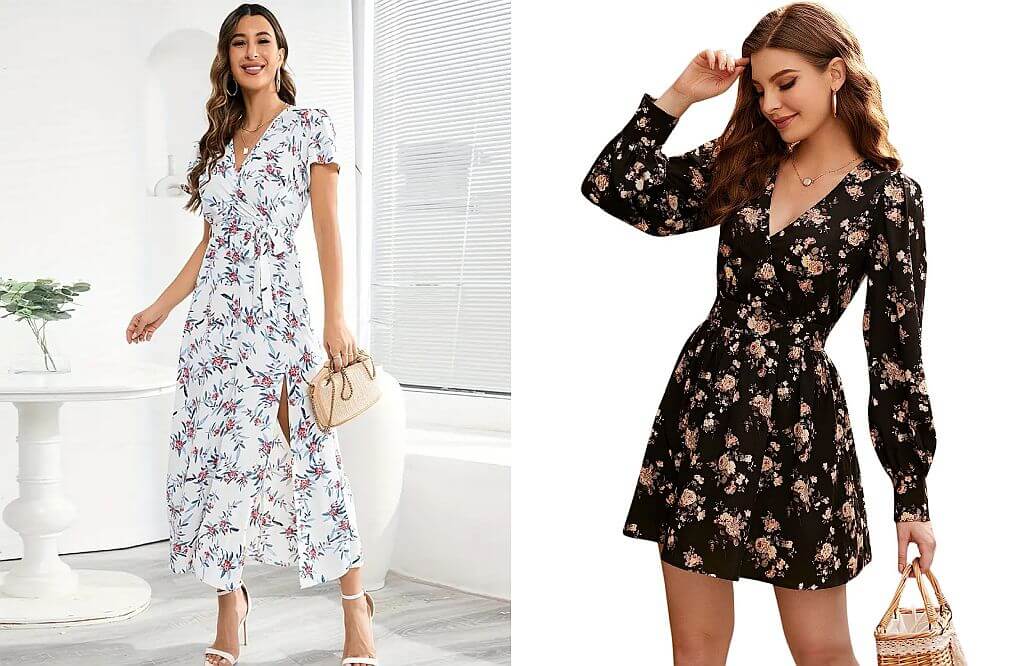In the realm of online shopping, Temu and Shein have emerged as popular platforms for fashion enthusiasts. With their vast selection of trendy clothing and affordable prices, they have captured the attention of consumers worldwide. This article aims to compare the pricing strategies of Temu vs Shein, shedding light on which platform offers more budget-friendly options. However, beyond the scope of affordability, it is important to emphasize the significance of sustainable clothing and guide readers towards making informed choices in favor of environmentally conscious brands.
The comparison between Temu and Shein’s pricing is not only about affordability but also about making responsible and sustainable choices. The fast fashion industry, represented by Shein, has long been associated with detrimental effects on the environment and exploitative labor practices. By contrasting it with Temu, a brand that prioritizes sustainability and ethical practices, we intend to steer readers toward considering the broader impacts of their shopping decisions.
- What is Temu: An Overview
- What is Shein: An Overview
- Temu vs Shein: Which is Cheaper?
- Pricing Strategies of Temu and Shein
- Factors Contributing to Pricing Differences
- Affordability of Temu’s Products Compared to Shein’s Fast Fashion
- Value Proposition and Price Points
- Long-Term Cost Implications
- Temu vs Shein: A General Comparison
- Audience and Market Reach
- User Experience (UX) and Interface
- Marketing Strategy
- Sales, Discounts and Freebies
- Customer Satisfaction
- Temu vs Shein: Understanding the Fundamental Differences
- Temu vs Shein: The Competition is Really Fierce
- Some of the Best Sustainable Alternatives to Temu & Shein
- Final Thoughts…

What is Temu: An Overview
Temu is an online marketplace that offers a diverse range of products similar to American retailers like Amazon. Founded by PDD Holdings, a Chinese Company, they aim to cater to customers who are looking for trendy and affordable fashion items. Their product range includes clothing, accessories, beauty products, and more. With a focus on providing rock-bottom prices, Temu empowers customers to make their purchases with a sense of luxury and indulgence through their enticing marketing campaign, “Shop like a Billionaire.” Being a recent launch,
Is Temu Ethical? Well, the brand has not been thoroughly examined for its practices, and since Temu does not produce it’s own products, similar to other fast-fashion companies, we cannot call it fast fashion. Temu operates like an online shopping marketplace.
What is Shein: An Overview
No, Shein also cannot be considered as an ethical brand. It operates as a fast fashion brand, targeting young women with its highly fashionable and trendy clothing line, offered at low and affordable prices. You’ve probably come across their extensive advertising on TikTok or Instagram, as their marketing efforts are widespread and hard to ignore, especially with Influencers showcasing extravagant clothing hauls across social media platforms.
Shein has headquarters in Shenzhen, Guangdong, China, and Singapore, with 4 research and development facilities in Nanjing, Shenzhen, Guangzhou, and Hangzhou, as well as 5 logistics centers in Foshan, Nansha, Belgium, and on the East and West Coasts of the United States.
While Shein claims to be environmentally conscious, it falls short of being sustainable. Despite stating that they produce small quantities of each design, around 50-100 pieces, the reality is that they introduce thousands of styles daily, with each style being produced at a massive scale, roughly around 100 pieces per day.
The brand was initially launched in 2008 under the name SheInside by Chris Xu, an entrepreneur and marketing specialist based in Nanjing, China.
Temu vs Shein: Which is Cheaper?

Pricing Strategies of Temu and Shein
Temu adopts a more affordable pricing strategy compared to Shein. Despite its lower prices, Temu surprises customers with slightly better-quality clothing than Shein’s offerings.
On the other hand, Shein follows a fast fashion pricing model, enticing customers with ultra-cheap and affordable pricing for apparel. However, this pricing approach raises questions about the durability and quality of their products.
Factors Contributing to Pricing Differences
Although pricing disparity between Temu and Shein can be attributed to several factors, the important point to note: Temu is an E-commerce platform, so their prices are dependent on how much the individual sellers desire to sell their products, which means that while some of their products are cheaper than Shein, some can also be a bit pricier.
Whereas Shein’s prices are solely based on their own cost-effective production methods and the potential use of lower-quality materials.
Affordability of Temu’s Products Compared to Shein’s Fast Fashion
Despite Temu’s lower prices, some customers have found its products to be of slightly higher quality and durability when compared to Shein’s fast fashion items.
This means that Temu offers a more affordable option without compromising on the longevity and reliability of their clothing.
Value Proposition and Price Points
Temu’s value proposition lies in providing budget-friendly options while maintaining a commitment to quality and sustainability. Customers are able to buy a variety of products at rock-bottom prices that are not just in the fashion category but house tools, electronics, etc.
On the other hand, Shein’s value proposition centers around offering trendy and stylish clothes at extremely low prices, making it attractive to fashionable shoppers on a tight budget.
Long-Term Cost Implications
Purchasing from Temu may prove to be a more cost-effective choice in the long run between the two due to the better durability and longevity of their garments. Although, Temu’s quality is also subject to the sellers, so their the products have a good chance of not being high quality.
Shein’s fast fashion items are made of materials that have short life cycles and hence need to be replaced quite often!
Out of the two, Temu emerges as a viable choice. Its affordable pricing, combined with higher quality garment seems to give it an edge. Temu calls itself ‘sustainable’ and ‘eco-friendly practices’ which also makes it a better choice, but being a recent company, it’s yet to show any evidence.
Temu vs Shein: A General Comparison

Audience and Market Reach
Temu primarily targets the average consumer residing in America. It aims to cater to a wide range of customers within the United States. On the other hand, Shein focuses on Gen Z and millennials from all over the world. Its audience is more geographically diverse, encompassing various countries and regions.
Shein boasts a larger user base, with approximately 43 million active users. This significant number indicates the brand’s widespread popularity and global reach among its target audience of young consumers.
In comparison, Temu’s active user count is around 17 million, indicating a relatively smaller but still significant market presence, especially considering its recent launch in September 2022. Temu app has reportedly already received over 50 million downloads.
Shein’s social media presence is also notable, with extensive advertising across platforms like TikTok and Instagram. The brand’s popularity on these platforms has likely contributed to its large user base.
User Experience (UX) and Interface
Shein provides a carefully curated user experience with an algorithm-driven recommendation system that guides users toward specific products. Their marketing strategies rely on social media platforms like TikTok and Instagram to attract Gen Z and Millennial buyers. The website or app emphasizes navigation toward the latest trendy and affordable apparel, using visually appealing images to encourage impulsive purchases.
In contrast, Temu’s website resembles a marketplace or online big-box retailer. The homepage features various sections showcasing brands, discounts, and upcoming holiday items. Users can easily browse through different categories of products based on their interests. Temu personalizes the user experience by tailoring product displays to individual preferences, creating a discovery-based platform. Users have the option to use the search bar for specific product searches or custom categories. Additionally, the platform allows browsing through similar products for each individual listing and provides a comprehensive listing of a store’s offerings for users interested in a particular brand.
To know more about which user experience is better, take a look at this comparison video:
Marketing Strategy
Both Temu and Shein employ various marketing strategies to reach their target audience and promote their brands effectively.
Temu’s marketing tactics have proven successful through initiatives such as providing customers with free products, discounts, and cash rewards when they refer the app to friends or engage with flash deals offering up to 90% off. The company has allocated a substantial budget of $1 billion for marketing Temu in 2023. Temu’s slogans “Team up” and “Price down” resonate with overseas consumers, emphasizing that the more people buy, the cheaper it becomes, attracting those with budget constraints.
The brand’s achievements can also be attributed to its social media marketing strategy. Launching a try-on haul on TikTok and partnering with influential figures in the US helps build brand awareness and voice swiftly. With physical stores impacted by the pandemic, consumers have turned to online shopping, making social media platforms even more critical for brand engagement. Cross-dressing and unboxing videos play a significant role in influencing consumers’ purchase decisions and creating a strong connection between consumers and the brand.
On the other hand, Shein’s marketing approach centers around micro-influencer marketing. Utilizing micro-influencers with a few hundred to a few thousand followers on platforms like Instagram, YouTube, and TikTok, Shein offers them free products on a monthly basis. Additionally, some of these influencers receive commission rates of 10 to 20% from Shein’s referral sales, further incentivizing them to promote the brand.
Shein primarily targets Gen Z, recognizing them as their key consumer group. To appeal to this demographic, the brand focuses on being desirable, unique, and socially acceptable to young people. This strategic approach aligns with the preferences and interests of Gen Z, making it more likely for them to engage with the brand.
During the COVID-19 pandemic, Shein effectively capitalized on the e-commerce boom, leveraging online platforms and social media channels to reach and engage with their audience. Their presence on TikTok, in particular, played a crucial role in expanding their brand reach and influence. Shein has also introduced a gamified experience for YouTube viewers, particularly through clothing haul videos. These interactive and visually appealing videos make the shopping experience more enjoyable and engaging for consumers, encouraging them to explore the brand further.
Sales, Discounts and Freebies
Temu and Shein have both employed various sales and promotional tactics, such as discounts, flash sales, and freebies. However, when compared, Temu emerges as the cheaper option. Not only are its products priced slightly lower, but seasonal discounts also bring the prices down even further. These strategies have a significant impact on customer acquisition and retention, as the allure of lower prices and attractive offers attracts new customers and encourages existing ones to return for more purchases. Ultimately, these tactics contribute to the success and growth of both brands in the competitive fashion market.
Customer Satisfaction
Temu has a rating of 3.4 stars from 820 reviews, indicating that while customers are generally satisfied with them, many also have polarizing negative views on Temu’s services.
Shein has a rating of 2.6 stars from 4,380 reviews, which indicates that many customers are quite dissatisfied and disappointed with the purchases.
Temu vs Shein: Understanding the Fundamental Differences

Business Models
Temu and Shein operate with their own distinct business models.
Temu operates as a curated marketplace, partnering with various fashion and lifestyle brands to offer a wide range of products to customers. They emphasize promoting sustainable and ethical brands, focusing on quality and responsible consumption. Temu aims to provide a platform where customers can discover unique, eco-friendly products while supporting small businesses and artisans.
On the other hand, Shein follows a fast fashion business model. They rapidly produce affordable clothing items that align with the latest trends. Shein prioritizes speed and affordability, aiming to cater to the ever-changing demands of fashion-forward consumers. They offer a vast selection of trendy clothing options at competitive prices, appealing to a wide customer base.
While Temu emphasizes sustainability and conscious consumerism, Shein’s focus lies in providing inexpensive, fashionable clothing quickly. The two brands differ significantly in their approaches to business and the values they promote. Ultimately, customers have the choice to prioritize their preferences, whether it’s supporting sustainable practices or following the latest fashion trends on a budget.
Product Variety
Both Temu and Shein offer an extensive range of products to cater to diverse tastes and preferences. Temu’s catalog includes various styles, such as casual wear, formal wear, sportswear, outerwear, and seasonal collections. Additionally, they have a dedicated section for plus-size clothing, demonstrating their commitment to inclusivity and ensuring that customers of all sizes have fashionable options.
Shein’s product range is equally impressive, with thousands of new items being added to their website daily. They provide a wide variety of clothing, including dresses, tops, bottoms, activewear, swimwear, and more. Shein also offers a diverse array of accessories like jewelry, sunglasses, and bags to complement different outfits.
Shipping and Delivery
In terms of shipping and delivery, Temu generally takes around 7-15 standard shipping days to deliver orders. As for Shein, their delivery time can vary, their standard shipping is also 7-15 days, Shein also offer various shipping options for customers to choose from.
Returns and Exchange Policy
Temu offers free returns within a 90-day timeframe and provides the option of exchanging products if customers are unsatisfied with their purchase. Shein, on the other hand, offers free returns within a 45-day timeframe.
Customer Support
In terms of customer support services, there are noticeable differences between Temu and Shein. Temu’s customer support is described as mediocre, but they often issue vouchers as compensation for any inconvenience or issues faced by customers.
Shein’s customer service is automated, relying on generic messages that may not always address specific problems effectively, leaving some customers feeling dissatisfied with the level of assistance provided.
Temu vs Shein: The Competition is Really Fierce
The fierce competitor battle between Chinese retailers Shein and Temu has magnified, with Temu registering a fresh lawsuit on July 14, 2023, alleging that Shein is plotting to take over the U.S. market and push Temu out. In July 2023, Temu filed a complaint against Shein, accusing the latter of “violating U.S. antitrust law”. The legal action alleges that Shein is pressuring manufacturers and making them sign loyalty oaths to stop working with Temu, creating a competitive disadvantage for the latter.
Some of the Best Sustainable Alternatives to Temu & Shein
While Temu is evidence that fashion may be improving, the mass-producing fast fashion industry is still far from providing ethical and 100% safe products for customers that are not only eco-conscious but will last them for years. These brands care about sustainability and provide some great alternatives for Temu and Shein, so you in the time you’re trying to pick an option between Temu and Shein, why not go for affordble sustainable clothing that cares for you and the world we live in?
1. Afends

Afends is a fashion brand known for its unique style and commitment to ethical and sustainable practices. They prioritize using organic and eco-friendly materials in their clothing, reducing their environmental impact. Additionally, Afends promotes fair labor practices, ensuring a positive social impact throughout its supply chain.
2. NA-KD

Na-Kd is a compelling alternative to Shein and Temu, offering trendy and diverse clothing products. With a focus on ethical and sustainable practices, Na-Kd ensures customers can enjoy fashion guilt-free. Their commitment to quality, fair production, and environmentally conscious choices make them a responsible and stylish option for fashion-forward shoppers.
3. People Tree

People Tree is a leading sustainable and ethical fashion brand, they have a strong commitment to fair trade and environmentally-friendly practices. People Tree ensures its clothing is ethically produced and uses eco-friendly materials. They provide a wide range of styles, from casual wear to elegant attire, suitable for various occasions. Besides clothes, People Tree offers accessories like jewelry, scarves, and bags, as well as sustainable home goods which makes a great alternative for Shein and Temu. Choosing People Tree allows conscious consumers to embrace fashion with a clear conscience, supporting a positive impact on the planet and its people.
Final Thoughts…
When comparing Temu and Shein, it becomes evident that Temu emerges as the slightly better brand due it’s quality and prices, the brand talks about its efforts towards sustainability and ethical practices, however, it’s essential to note that the evidence supporting Temu’s claims might be limited, making it only marginally better than Shein.
In making conscious fashion choices, it’s crucial to opt for more sustainable alternatives beyond these brands. Slow fashion brands are known for their transparent sustainable practices and ethical values, and offer a guilt-free fashion experience. By choosing such brands, we can positively impact the environment and support fair working conditions for garment workers. Let’s embrace sustainable options and become responsible consumers, working together to create a more eco-friendly and socially conscious fashion industry.








The products on both sites are mostly the same! Same quality! Same manufacturer!